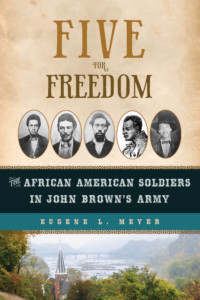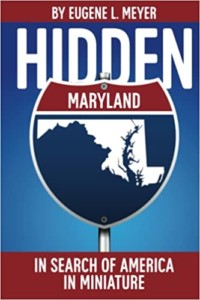Campus Silos Then and Now
I recently learned that 538 W. 114th Street in Morningside Heights was to become The Black Residential Brownstone for Columbia College. The story, in the Columbia Spectator, made no mention of the building’s history, with which I am intimately familiar.
As a Columbia undergraduate in the early 1960s, I lived there when it was Phi Gamma Delta, an all-white fraternity. For those of us in the so-called silent generation, there was nothing unusual about this. What was unusual was that in my fraternity, numbering 40 or 50. there were a handful of Jews, including me. I was even an officer in my senior year. Beyond our tiny minority, our multi-cultural mix included a Finn and one Russian, the son of a diplomat assigned to the U.N. For our Omega chapter, racial integration was off the table.
Lately, there has been much talk, and some handwringing, about silos, how we tend to inhabit one to the exclusion of all others, thereby limiting our circle only to those politically and/or ethnically compatible. To many on campus, it appears, a university-sanctioned all-Black residence is a good silo. Others might decry the implied self-segregation in the quest for “safe spaces.” Sadly in 2023, with the long lingering legacy of slavery and the recent resurgence of antisemitism, they may still be needed.
There were silos in my day, too. There were several Jewish fraternities, not officially but actually. For wealthy German Jews, there was ZBT (Zeta Beta Tau), to which New England Patriots owner Robert Kraft belonged. For Jews of Eastern European background, there were others. At least two fraternities attracted mainly jocks. Another one preppies.
Mine was clearly a “Christian” house, though in no way religious, or partisan, and alumni included Herbert Lehman, the Depression-era New York governor, who was a liberal, a Democrat and a Jew. Jack Kerouac, Beat Generation novelist and poet, belonged, as did 1988 graduate Neil Gorsuch, the conservative Supreme Court justice appointed by Donald Trump.
Of my 1964 graduating class of 600, all men in those days, there were just three Blacks–and two were from African countries. In prior years, Columbia had unofficially limited the number of Jews admitted to the college. But when I entered, this was not the case. The admission process that year, relying largely on college board scores, had yielded just the opposite. We were heavily Jewish and 80 percent were from within 50 miles of the New York metropolitan area.
As a result, the admissions director David Dudley was fired, and we became known as “Dudley’s Follies.” Diversity had not yet entered the lexicon. Instead, our class was criticized for lacking “geographical distribution,” which many of us understood to be code for too many Jews. Dudley, who was not Jewish, was the guest of honor at our 25th class reunion in 1989.
But back to 538 and Phi Gam. During our 50th anniversary reunion, I went there to check it out. Though the Greek letters were still engraved above the front door (and still are), Phi Gam no longer occupied it. The fraternity, I learned, had been suspended in 1998 for “behavior that was not consistent with the standards of the Greek community.” Instead, an architecture firm had a small office on the second floor. The pool table at which I’d wasted many happy hours was still in the basement. Our upstairs bedrooms were stripped to the studs. My brief visit brought back many memories, of another time in this place.
I am not going to sugarcoat it. Among my “brothers,” the n-word was commonly heard. The phrase “jew me down” also came from one member, a tall Texan whom I liked. He literally did not know that it was offensive until I took the time to explain it to him.
Phi Gams were universally known as Fijis, which translated into a blatantly racist cartoon caricature of a “Fiji Islander.” My years there were before John Belushi’s “Animal House,” but that’s what we often were. In place of Toga parties, we had an annual Fiji Island Party, “a traditional source of wholesome debauchery,” according to my yearbook. The subject of race arose only when schools demanded fraternities formally adopt color blind membership policies. Our national office adopted a “chapter dispensation” stance to allow its chapters to comply. I have no recollection, though, that Columbia sought such a commitment then.
In my fraternity house, whose members were largely conservative, or apolitical, I was quietly a liberal. This was when some in my generation were becoming protestors, for civil rights in the South or against the nascent war in Vietnam. My mild act of protest was to threaten to boycott a house chapter meeting scheduled for the day of John F. Kennedy’s funeral. That was enough, it seemed, to get it canceled. Nonetheless, my brothers held an “LBJ inauguration” party that weekend, with a keg but no band, which the interfraternity council had forbidden.
Exactly what caused Phi Gam’s suspension in the 1990s is unclear. The fraternity owned the land but lost its house. Reinstated, it continues on campus, using other facilities for meetings and parties. From what I read online, its record is mixed. It’s been accused of misoginy and even of being the “rapey house.” In 2020, it also apologized and demanded the disaffiliation of some members after racist texts surfaced over Black Lives Matter and George Floyd protests.
Columbia recently acquired the brownstone and invited groups to apply for residency. The three applicants were Alpha Epsilon Pi, now officially designated as “the Jewish fraternity at Columbia University,” the Muslim Student House, and the Black Residential Space Collective, the successful bidder. AEPi formerly occupied a brownstone at 548 W.114th Street but, since 2010, has been houseless, as have been the Black and Muslim groups.
Now 538 W. 114th Street, formerly Phi Gam and now the Black Residential Brownstone, will house 18 students and one “resident advisor,” according to Spectator. Previously, the story said, Columbia, Princeton and Harvard were the only Ivy League schools without residences exclusively for Blacks. That has now changed, at least on Morningside Heights. There is some irony in this conversion. And also some history, which goes unnoted, except perhaps here.
—
On Tuesday Feb 14 at 2 p.m. I’ll be on History Conversations via Zoom speaking about my book Five for Freedom: The African American Soldiers in John Brown’s Army. The book’s price is currently reduced on Amazon by 38% to $16.82. It is also available as an audiobook and on Kindle.

My latest book Hidden Maryland: In Search of American in Miniature is also available on Amazon in paperback or e-book. From Chesapeake to Appalachia, by Road or Rail, Military Maryland, Sports, Profiles–there’s something for everyone in this collection of columns and features–many updated–I wrote for Maryland Life magazine. Washingtonian magazine recently said it contains “undertold stories” and is “packed with fun info about the state.”

An interesting story, Gene. At the end of my freshman year at the University of Michigan (in 1970), it was revealed that admissions officers had imposed a quota of 55 percent men, 45 percent women for my freshman class (Class of 1973) because they were worried there might be an “overbalance” of women since our SAT scores and high-school rankings were out-performing males. This was covered in my own book on the topic, “Conquering Heroines: How Women Fought Sex Bias at Michigan and Paved the Way for Title IX.” In 1970, dozens of sex discrimination complaints were filed against U.S. universities, making use of a new executive order that prohibited sex discrimination by federal contractors. Columbia, like Michigan, fought federal compliance efforts, and Columbia fought longer than Michigan did. The papers of then-HEW secretary Eliot Richardson at the Library of Congress are revelatory about some of the political pressure that was brought to bear on Columbia’s behalf. (My late husband, Walter Wurfel, was a Columbia J-school grad in the Class of 1962.)
Nice piece Gene at our age history takes on a new significance and I enjoyed reading everything you revealed. I also appreciate your understanding that sometimes silos are needed.